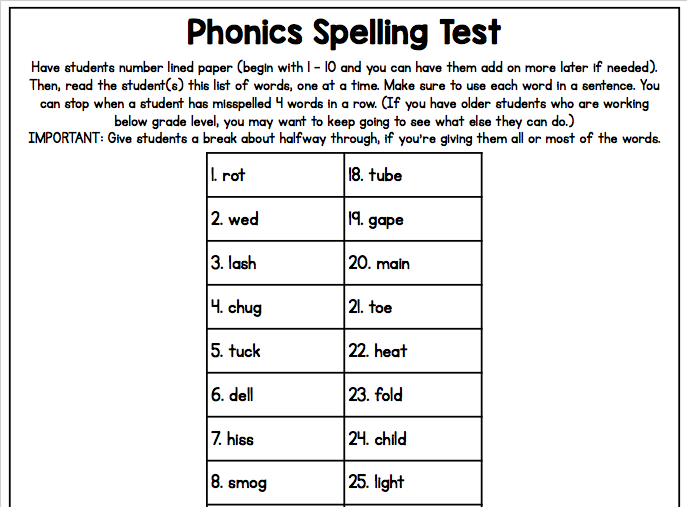
How To Know Where to Start When You're Teaching Phonics
If you're teaching phonics to a student or group of students, you may wonder, "Where do I even begin?"
If you're working with preschoolers or Kindergarteners, you're likely going to begin with the alphabet and letter sounds. These are the building blocks that will allow them to eventually develop more advanced phonics skills.
If you need guidance in teaching those skills, take a look at Level K of our phonics program, From Sounds to Spelling, and make sure to download the free trial week.
But what if your students are beyond learning the alphabet? Perhaps they've had some instruction, but you may not know exactly what they have and have not mastered. In this article, we'll explore how you can determine what they do and do not know, as well as where to get started with your phonics instruction.
How to Assess Students' Phonics Knowledge
Assessing students' current knowledge is an important step in understanding where to begin.
A spelling assessment is a great way to determine what patterns students know, and what students haven't mastered yet. Here's part of an example (this is available for free at this link - not all phonics programs include them so this may be helpful to download):

Here's how this spelling inventory works:
- You give this assessment just like a spelling test. You can administer it in 1:1, in a small group, or in a whole group setting.
- The words progress from less difficult to more difficult. If a student misses 4 words in a row, you can discontinue the assessment with them. (If you're giving it in a larger group, just keep an eye on how the entire group is doing before deciding to discontinue.)
- Most of the words aren't particularly common - this is intentional. For example, most students won't have encountered the word "smog" frequently. This is because the assessment seeks to determine how students can apply phonics patterns (i.e. the "sm" blend and short vowel o, in the word "smog") - not whether a student has memorized the spelling of a word.
- Based upon how students do, you'll be able to see if a student needs more work on - for example - silent e words, double final consonants, diphthongs, etc.
You can download this assessment for free at this link. Inside that free login area, you'll also find a scope and sequence for our phonics program, From Sounds to Spelling - the assessment can help you place students in the program, if needed.
Other Phonics Assessments
In addition to the spelling inventory, you may also choose to gather more information about what types of words students can read.
More often than not, students can decode words that are more difficult than those words that they can spell. This is normal. In the complete From Sounds to Spelling phonics program, we provide a more comprehensive assessment that will allow you to measure students' decoding abilities as well.
What's Next?
After you've administered and analyzed students' results on the assessments, you'll need to determine "what's next" for each student. The best way to do this is to use a scope and sequence (get a free phonics scope and sequence PDF at this link).
Here's an example with spelling inventory results from a first grader, "Julio:"
1. rot - spelled correctly
2. wed - spelled correctly
3. lash - spelled correctly
4. chug - spelled correctly
5. tuck - spelled incorrectly as "tuk"
6. dell - spelled incorrectly as "del"
7. hiss - spelled correctly
8. smog - spelled incorrectly as "sog"
9. clad - spelled correctly
10. trim - spelled incorrectly as "chrim"
11. pent - spelled incorrectly
12. cramp - spelled incorrectly
13. tong - spelled incorrectly
14. plink - spelled incorrectly
We notice that Julio has mastered his short vowel sounds. He is also doing well with digraphs "sh" and "ch." Digraph "ck" was not yet mastered, nor was the double final consonant in "dell." Julio has some level of mastery with consonant blends, but not complete mastery.
If you were working with Julio, you would probably want to begin by reviewing the "ck" digraph, as well as double final consonants. Julio has partial mastery of double final consonants, so you would move relatively quickly through them. Then, you'd begin working on consonant blends.
A general rule of thumb is to begin with the "easiest" skills that a student has not yet mastered. You may be able to do some quick review and move on, but you don't want to simply ignore gaps in learning.
From Sounds to Spelling can provide you with both comprehensive assessments for determining what students need to work on, as well as the actual lesson plans and materials to use with the students.
The free placement test at this link will help you understand where to place students in the program, and the complete program has even more in-depth diagnostic assessments that include phonological awareness, phonics, and high frequency words.




